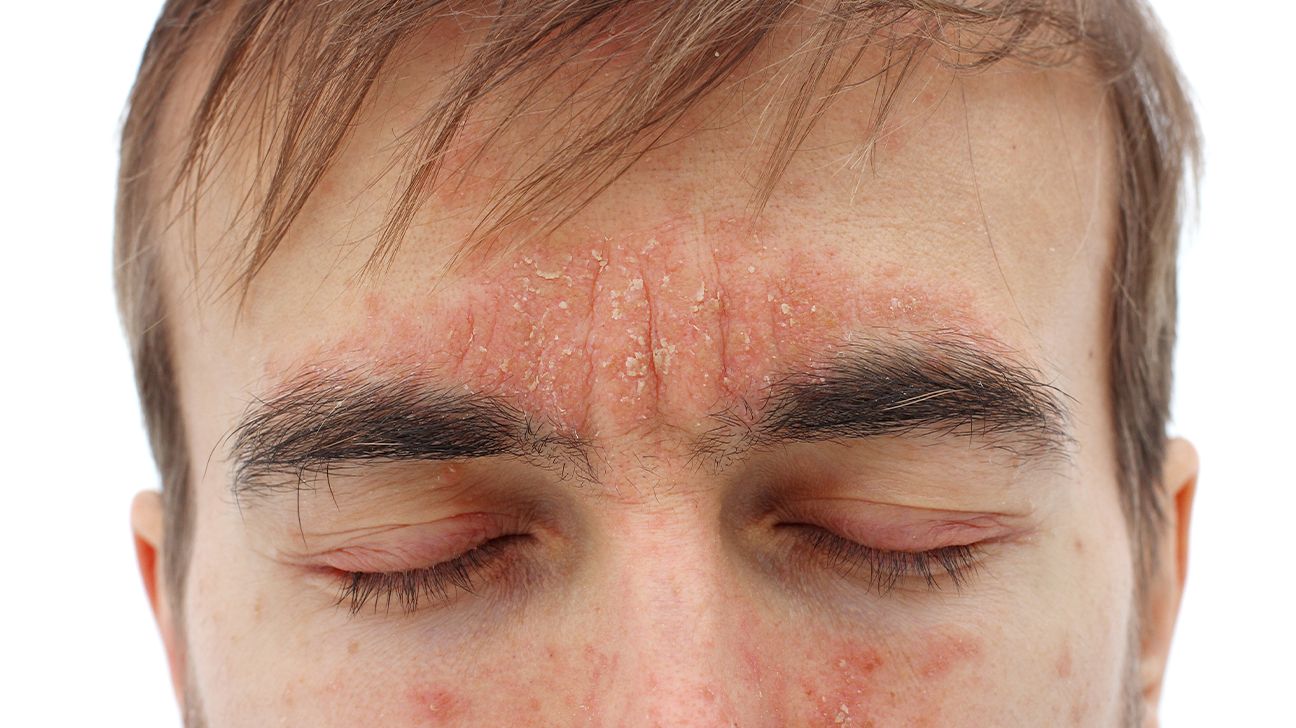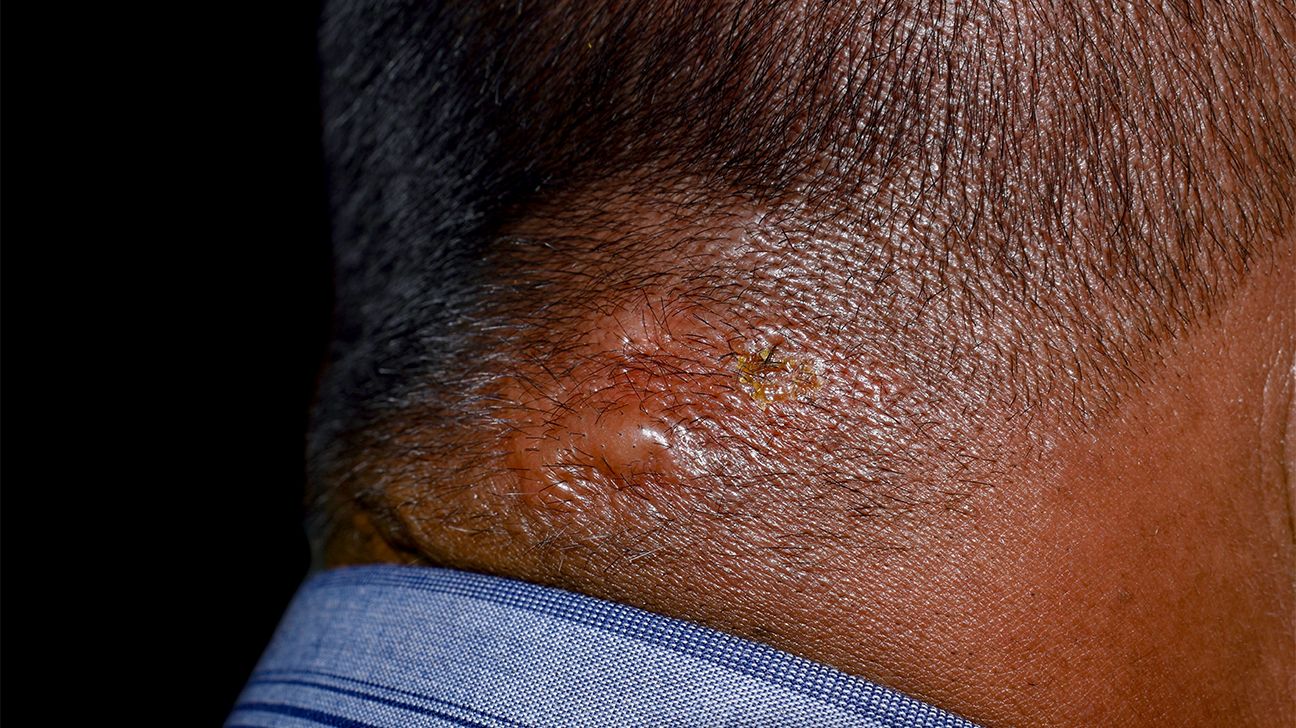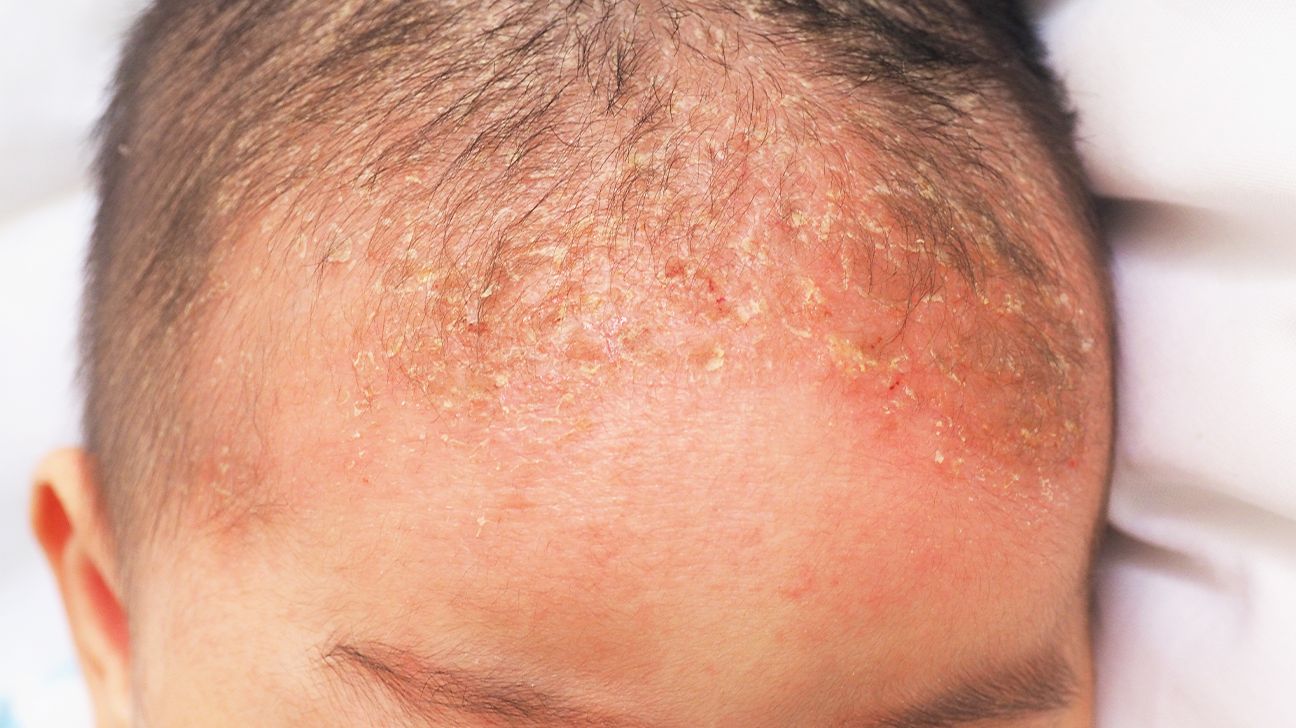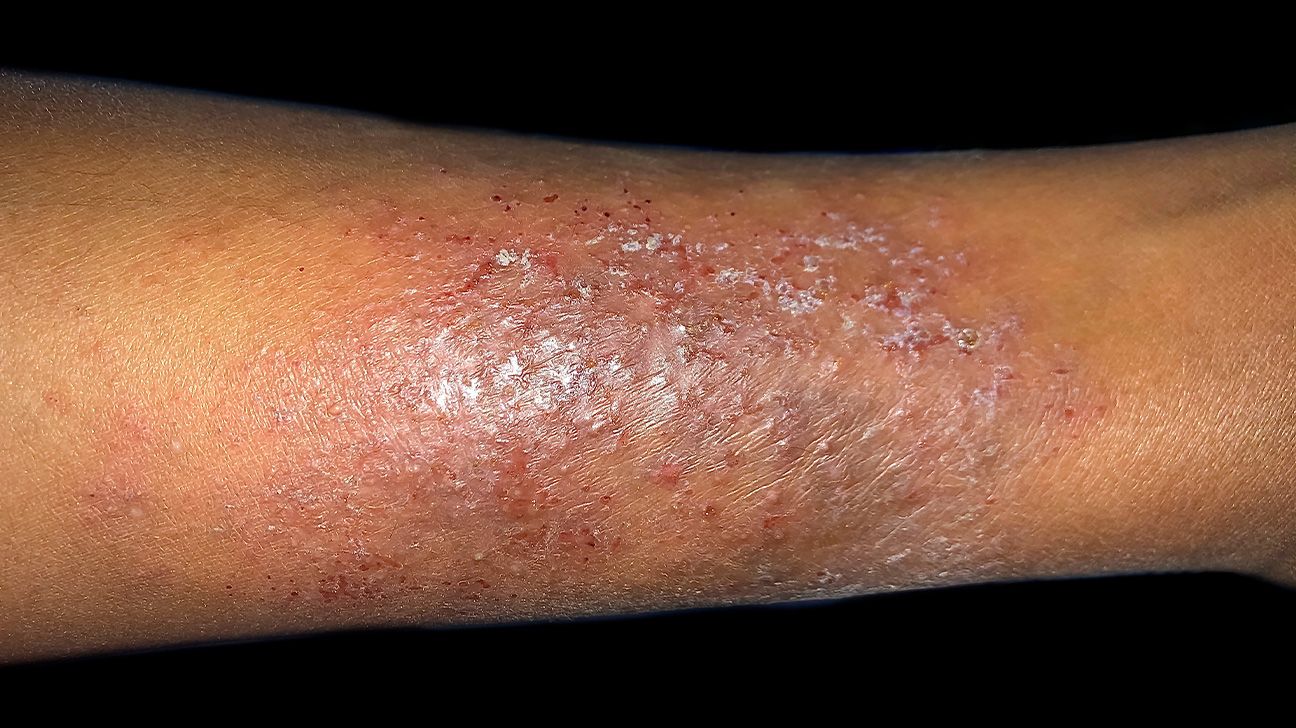There are several types of eczema. Seborrheic dermatitis is a type of eczema that causes flaky, oily patches of skin. However, the most common type is atopic dermatitis, which causes dry, itchy, inflamed patches of skin.
Seborrheic dermatitis
People can have just one type of eczema, or they can have both. Read on to learn more about the differences between seborrheic dermatitis vs. eczema.





Eczema is a group of conditions that cause skin inflammation. Atopic dermatitis refers to the
Atopic dermatitis causes dry, inflamed, itchy patches of skin. These patches can develop blisters or peel. Sometimes, the skin can crack open and bleed.
Seborrheic dermatitis is a different type of eczema that causes scaly patches of skin that feel waxy or oily. It
In babies, seborrheic dermatitis can cause cradle cap, which causes flaky yellow or flesh-colored patches on the head. Seborrheic dermatitis can also cause dandruff.
Atopic and seborrheic dermatitis can have a similar appearance, as both cause inflamed, itchy skin patches. Some crucial differences between the two conditions include the following:
- Location: Seborrheic dermatitis
typicallyTrusted Source occurs on oily areas of the body, such as the scalp, face, chest, or behind the ears. Atopic dermatitis may appear anywhere. - Skin oils: Atopic dermatitis looks dry and dull, but seborrheic dermatitis looks oily or waxy.
- Flaking: Atopic dermatitis may cause the skin to peel or flake. Significant scaling or flaking is a hallmark of seborrheic dermatitis.
- Color: In lighter skin tones, atopic dermatitis appears red, and in darker skin tones, it can be purple or dark brown. Seborrheic dermatitis can be faintly red, but not always. In people with darker skin tones, the rash may be lighter than the surrounding skin. The scales may be white or yellowish.
Yes, people can have both seborrheic dermatitis and atopic dermatitis at the same time. It is
However, adults with seborrheic dermatitis are more likely to have a history of psoriasis rather than atopic dermatitis.
Seborrheic and atopic dermatitis may affect different areas of the body simultaneously. For example, a person might have seborrheic dermatitis on their scalp, while atopic dermatitis affects their arms or legs.
Some estimates indicate that
Both types of eczema are multifactorial, meaning multiple factors contribute to them. However, the factors for each are slightly different.
Researchers believe that seborrheic dermatitis occurs when a fungus known as Malassezia interacts with oils on the skin, causing an inflammatory reaction.
However, this fungus alone does not necessarily mean a person will get seborrheic dermatitis. Other factors may contribute,
- skin irritation
- stress
- oily skin
- hormonal shifts
- genetics
- disruption to the microbes living on the skin
- having a weakened immune system, such as from HIV and AIDS
- nervous system conditions, such as Parkinson’s disease, stroke, or Alzheimer’s disease
certain medicationsTrusted Source , such as lithium, immunosuppressants, and dopamine antagonists
On the other hand, atopic dermatitis is more common in people with allergies and asthma.
Genetics, stress, and the bacteria that live on the skin also influence the development of atopic dermatitis.
There are no specific tests for eczema, so doctors diagnose both seborrheic and atopic dermatitis based on the skin’s appearance and a person’s medical history.
If it is unclear which type of eczema a person has, they may perform a skin biopsy, which involves taking a small skin sample to examine it.
If a doctor thinks a specific allergen is worsening symptoms, they
Because these types of eczema have differing causes, they also have different treatments.
Treatment for atopic dermatitis focuses on restoring moisture to the skin and calming inflammation. This may involve:
- using a corticosteroid cream
- moisturizing regularly
- protecting the skin from further irritation
- identifying and avoiding triggers, such as certain foods or products with fragrance
Treatment for seborrheic dermatitis can also involve corticosteroid cream, but it also directly targets the Malassezia fungus that exacerbates symptoms. This
- antifungal shampoo or cream
- salicylic acid treatments, which remove scales
- products containing tar
Atopic dermatitis and seborrheic dermatitis are both types of eczema. They can look similar, but typically, atopic dermatitis looks dry and inflamed, and seborrheic appears greasy and flaky. Seborrheic dermatitis also tends to affect oily body areas, such as the scalp, face, chest, or skin folds.
People who have persistent skin symptoms, such as itchiness or inflammation, should speak with a doctor. A doctor can diagnose these conditions based on their appearance, location, and a person’s medical history. People can find a doctor using the AAD’s Find a Dermatologist tool.

